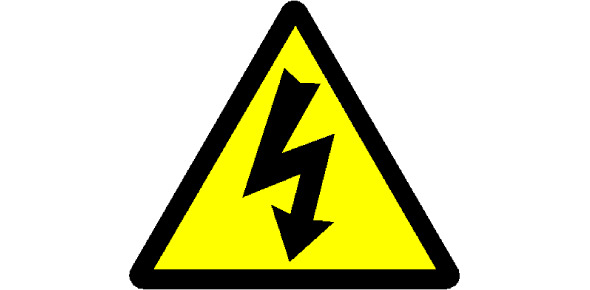Health And Safety Induction Quiz
(48).jpg)
We welcome you to this Health and Safety Induction Quiz. Understanding the general health and safety of the employee is essential. The questions in our quiz are carefully curated to help you understand more about the topic. We are sure that you'll learn something new with the test, so make sure to attempt all the questions carefully. Your scores will be available once you've completed the test. We wish you all the very best with the quiz.
Health and Safety Induction Questions and Answers
- 1.
Where can the first aider list be obtained?
- A.
From Gripple Intranet
- B.
On the gripple website
- C.
Quality office
- D.
Meeting room
Correct Answer
A. From Gripple IntranetExplanation
First Aider list is available through the internet, or on many posters that are displayed throughout Gripple, such as on the first aid room door.Rate this question:
-
- 2.
Out of the following which is NOT an associated risk in the Gripple office area?
- A.
Carrying heavy items - muscle pull injury
- B.
Slip and trips - impact injury
- C.
Working at height possible - fall injury
- D.
DSE - possible eye strain or back injury
Correct Answer
C. Working at height possible - fall injuryExplanation
Working at height is not an associated risk in the office. Carrying heavy items, slips/trip, and DSE (display screen equipment) could all be classed as risks in GrippleRate this question:
-
- 3.
How often and when is the fire alarm tested?
- A.
once a week on monday
- B.
Once a week on friday
- C.
One a week but any day
- D.
On the 1st of every month
Correct Answer
B. Once a week on fridayExplanation
so everyone is familiar with sound of fire alarm and so its not mistaken for a real fire every test is done once a week on a friday morningRate this question:
-
- 4.
What is PPE?
- A.
Personal Production Equipment
- B.
Personal Protective Equipment
- C.
Priority Protective Equipment
- D.
Poisoning Protection Equipment
Correct Answer
B. Personal Protective EquipmentExplanation
Equipment given to staff to ensure safety when no other means of hazard prevention remain.Rate this question:
-
- 5.
What is YOUR responsibility for health and safety at Gripple?
- A.
I have no responsibility for health and safety.
- B.
I don't know, my Manager will tell me when I have a responsibility.
- C.
Follow procedures and work in a safe manner
- D.
To work in a safe manner
Correct Answer
C. Follow procedures and work in a safe mannerExplanation
You have a responsibility to work in a safe manner, never carry out dangerous tasks, always use safety equipment, adhere to signs, and follow all health and safety procedures.Rate this question:
-
- 6.
What do you do in the event of a fire?
- A.
Leave it, somebody else will sort it.
- B.
Find a manager or team leader and tell them, then head towards the exit
- C.
Grab the nearest fire extinguisher and tackle the fire
- D.
Walk quickly to the nearest exit and activate an alarm call button on exit
Correct Answer
D. Walk quickly to the nearest exit and activate an alarm call button on exitExplanation
In the event of a fire, it is important to prioritize personal safety and evacuate the premises as quickly as possible. Walking quickly to the nearest exit ensures a swift and orderly evacuation. Activating an alarm call button on exit is also crucial as it alerts others to the fire and helps in initiating the necessary emergency response procedures. This answer demonstrates the correct protocol for responding to a fire emergency.Rate this question:
-
- 7.
What is a risk assessment?
- A.
A visual assessment made by an operator to assess risks before an operation
- B.
After an accident has occurred its an used to see how it happened
- C.
A documented method of looking at work activities, considering what could go wrong, and deciding on suitable control measures to prevent loss, damage or injury in the workplace
- D.
A document made to ensure we are legally compliant
Correct Answer
C. A documented method of looking at work activities, considering what could go wrong, and deciding on suitable control measures to prevent loss, damage or injury in the workplaceExplanation
Risk assessments are made for every machine and process. To evaluate the risks involved. Put in control methods and eliminate risk where possible.Rate this question:
-
- 8.
Identify the sign
- A.
You must wear eye protection
- B.
Warning: eye protection advisable
- C.
Wear sunglasses
- D.
Wear safety glasses when you are doing an operation that you think may damage your eyes
Correct Answer
A. You must wear eye protectionExplanation
Blue signs are mandatory: You MUST wear eye protection in this areaRate this question:
-
- 9.
Where are the gripple emergency assembly points located?
- A.
The rear of building outside the office
- B.
Warehouse roller shutter doors
- C.
Front carpark
- D.
Outside reception
Correct Answer
C. Front carparkExplanation
4 assembly points are located at the front carparkRate this question:
-
- 10.
Identify this sign.
- A.
Danger: Lightning
- B.
Danger: Possible Electrocution
- C.
Warning: Static electric build up
- D.
Warning: Electrical risk
Correct Answer
D. Warning: Electrical riskExplanation
A yellow sign is a warning sign: Electrical risk, will appear on all electric cabinets located on machines or wallsRate this question:
-
- 11.
How should you lift correctly?
- A.
Adopt a stable position lift using the arms to take the weight of the lift
- B.
Adopt a stable position lift using the back to take the weight of the lift
- C.
Adopt a stable position lift using the legs to take the weight of the lift
- D.
Drag the weight so you don't need to lift it
Correct Answer
C. Adopt a stable position lift using the legs to take the weight of the liftExplanation
When lifting a weight it is important that you are stable and as you lift you have a straight back making sure you lift pushing up from your legs. Carry close to the body and when lowering, again use the legs.Rate this question:
-
- 12.
Out of the following which is not an associated risk in Gripple production areas
- A.
Slip and trips - impact injury
- B.
DSE - possible eye strain or back injury
- C.
Manual handling - lifting injury
- D.
Work in confined spaces – Risk of personal injury
Correct Answer
D. Work in confined spaces – Risk of personal injuryExplanation
Gripple has no operation in confined spaces, all others are applicable in the production areasRate this question:
-
Quiz Review Timeline +
Our quizzes are rigorously reviewed, monitored and continuously updated by our expert board to maintain accuracy, relevance, and timeliness.
-
Current Version
-
Mar 21, 2024Quiz Edited by
ProProfs Editorial Team
Expert Reviewed by
Farah Naz -
Feb 09, 2010Quiz Created by
Andygull
- Abdomen Quizzes
- Addiction Quizzes
- Aging Quizzes
- Arthritis Quizzes
- Beauty Quizzes
- Blood Quizzes
- Body Quizzes
- Bone Quizzes
- Brain Quizzes
- Child Health Quizzes
- Dermatology Quizzes
- Digestive System Quizzes
- Disease Quizzes
- Fertility Quizzes
- First Aid Quizzes
- Hair care Quizzes
- Health And Nutrition Quizzes
- Health And Wellness Quizzes
- Health Policy Quizzes
- Health Psychology Quizzes
- Health Worldwide Quizzes
- Hearing Quizzes
- Heart Quizzes
- Hospital Quizzes
- Illness Quizzes
- Injury Quizzes
- Kidney Quizzes
- Liver Quizzes
- Lung Quizzes
- Medical Quizzes
- Mental Health Quizzes
- Nose Quizzes
- Nutrition Quizzes
- Obesity Quizzes
- Ophthalmology Quizzes
- Patient Quizzes
- Patient care Quizzes
- Pharmacy Quizzes
- Pregnancy Quizzes
- Puberty Quizzes
- Public Health Quizzes
- Respiratory System Quizzes
- Sleep Quizzes
- Stress Quizzes
- Surgery Quizzes
- Surgical Instruments Quizzes
- Throat Quizzes
- Weight Quizzes
- Wellness Quizzes




